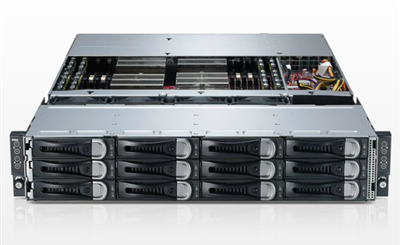
After several days in Beijing, I flew on to Taipei and experienced a massive change in weather. Or more specifically, in air quality. The Beijing air quality index hit 420 in the evening that we were leaving, giving the air a foggy quality that reminded me of the dust storms that I have seen in Dubai. Landing in Taipei that evening, we had gone from mid 30s and thick air to upper 80s and pure humidity; perfect for clearing out the lungs a bit.
For reference, it was ~25 in Austin, and a bad day in Los Angeles is ~100. On days like this it is hard to see things.
The launch of the new AMD Opteron 4200 and Opteron 6200 Series processors was a great success for AMD as we helped to clear the air regarding performance with our technology partners, including Dell.
Dell has a great portfolio of servers built on AMD Opteron processors, including a few of my favorites like the Dell PowerEdge R815 (the massively dense 4P/2U general purpose server) and the specialized PowerEdge C6145 that offers two 4P servers in a single 2U enclosure. If anyone is counting, that PowerEdge C6145 is now capable of quickly deploying 128 cores in a 2U space.
Dell released some performance benchmarks that help bring clarity to the virtualization and scale-out markets.
The new Dell PowerEdge M915 blade brings a new level of efficiency to 4P servers with a world record score of 2,919 SPECpower_ssj2008 overall ssj_ops/watt, giving Dell a lead over every other 4-socket server ever tested. As a matter of fact, the advantage that AMD holds is pretty substantial. The AMD-based PowerEdge M915 is 60 percent higher than the closest 4P Intel-based server. This performance-per-watt leadership becomes even more compelling when you consider the dense environments where blades are being deployed and power efficiency is critical. 4P blades are perfect for virtualization, database, business applications, as well as other applications that demand scalability and feature connected storage. With the highest power efficiency, customers can deploy these servers knowing that they are not only delivering great performance and scalability, but also that their efficiency will help in maximizing the power budget in the data center, allowing for more servers in a rack.
In addition, the PowerEdge C6145 continues to build up an amazing set of accomplishments. I love this server because there is really nothing like it in the market. Dell has figured out how to pack two 4P servers into a dense 2U chassis, allowing for a great solution when it comes to maximizing the number of threads per square foot in the data center. A 42U rack full of these servers would net out 2,688 total cores, making the solution ideal for environments like HPC, cloud, web and virtualization, where access to high thread density can bring maximum efficiency.
The Dell PowerEdge C6145 helps maximize performance-per-U, especially compared to the HP DL980 G7. The HP manages to deliver integer performance in the SPECint_rate2006 benchmark of 2180. But in doing so, that system requires eight very expensive Intel processors. The Dell PowerEdge C6145 delivers a score of 2080, and does so in only 2U of rack space, a mere one-fourth of the space required for the HP. When you look at overall data center efficiency, you see an advantage for Dell of 282 percent, as Dell is able to achieve essentially 1040 per U and the 8P HP system can only manage to achieve a score of 272 per U.
Clearly, if you are trying to get the most of your data center and you want to maximize your efficiency, these new Dell servers bring you the best performance-per-watt and the best performance-per-U.
Oh, and did we even talk about how they help you maximize your budget? I think the best way to find out all about this is to talk to your Dell representative today or visit www.dell.com to see for yourself. If the performance isn’t eye opening enough, the value that you get with these Dell systems is second to none.